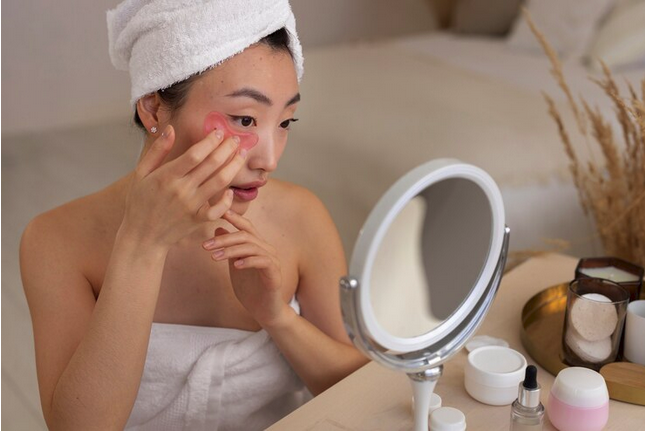Melasma is a common skin condition characterized by dark, discolored patches on the face, particularly on the cheeks, forehead, chin, and upper lip. It primarily affects women and is often associated with hormonal changes, sun exposure, and genetic predisposition. While melasma doesn't pose any health risks, it can have a significant impact on self-esteem and confidence. Treating melasma involves a multifaceted approach, including the use of topical creams containing ingredients that target hyperpigmentation, inhibit melanin production, and protect the skin from further damage. Here, we'll explore some of the top cream for melasma to treat effectively, helping you achieve a more even and radiant complexion.
Understanding Melasma
Before delving into treatment options, it's essential to understand the underlying mechanisms of melasma. Melasma occurs when there is an overproduction of melanin, the pigment responsible for skin color, leading to the formation of dark patches. Hormonal fluctuations, sun exposure, and genetic factors can trigger melanin production, exacerbating melasma. Therefore, effective treatment involves not only lightening existing pigmentation but also preventing its recurrence by addressing underlying causes and protecting the skin from further damage.
Key Ingredients for Treating Melasma
When choosing a cream to treat melasma, it's crucial to look for specific ingredients that target hyperpigmentation and inhibit melanin production. Some key ingredients known for their efficacy in treating melasma include:
- Hydroquinone: Hydroquinone is a gold standard ingredient in treating hyperpigmentation, including melasma. It works by inhibiting tyrosinase, an enzyme involved in melanin production, thereby lightening dark spots and promoting an even skin tone. Hydroquinone creams are available in various concentrations, with higher concentrations typically prescribed by dermatologists for more severe cases of melasma.
- Kojic Acid: Kojic acid is a natural ingredient derived from fungi and is known for its skin-lightening properties. It works by inhibiting tyrosinase activity, similar to hydroquinone, and can be an effective alternative or adjunct to hydroquinone in treating melasma.
- Azelaic Acid: Azelaic acid is a dicarboxylic acid found in grains like barley, wheat, and rye. It exerts its effects by inhibiting tyrosinase activity and reducing inflammation, making it effective in treating both hyperpigmentation and acne, which often coexist with melasma.
- Glycolic Acid: Glycolic acid is an alpha hydroxy acid (AHA) derived from sugar cane and is known for its exfoliating properties. By promoting cell turnover and removing dead skin cells, glycolic acid can help fade dark spots and improve the overall texture and appearance of the skin.
- Vitamin C (Ascorbic Acid): Vitamin C is a potent antioxidant that helps brighten the skin and protect it from oxidative stress caused by free radicals. Ascorbic acid, the most common form of vitamin C used in skincare products, inhibits melanin production and promotes collagen synthesis, making it beneficial for treating melasma and promoting overall skin health.
- Licorice Extract: Licorice extract contains compounds like glabridin and liquiritin that inhibit tyrosinase activity and reduce melanin production. It also has anti-inflammatory properties, making it effective in treating melasma and calming skin irritation.
Sun Protection
In addition to using topical creams, sun protection is paramount in managing melasma. Sun exposure can exacerbate existing pigmentation and trigger melanin production, leading to further darkening of the skin. Therefore, incorporating a broad-spectrum sunscreen with a high SPF into your daily skincare routine is essential. Look for sunscreens labeled "broad-spectrum," which provide protection against both UVA and UVB rays, and choose a formulation suitable for your skin type, whether it's a physical (mineral) or chemical sunscreen.
Top Creams for Treating Melasma
- Hydroquinone Cream: Hydroquinone creams are available in various strengths, ranging from over-the-counter formulations containing 2% hydroquinone to prescription-strength creams containing higher concentrations, such as 4% or even 8%. While over-the-counter hydroquinone creams can be effective for mild cases of melasma, prescription-strength formulations may be necessary for more stubborn or severe pigmentation.
- Kojic Acid Cream: Kojic acid creams are available over the counter and can be used as an alternative or adjunct to hydroquinone in treating melasma. They work by inhibiting melanin production and can be used alone or in combination with other lightening agents for enhanced efficacy.
- Azelaic Acid Cream: Azelaic acid creams are available by prescription and can be effective in treating melasma, particularly in individuals with sensitive skin or those who cannot tolerate hydroquinone. They work by inhibiting tyrosinase activity and reducing inflammation, leading to a brighter and more even complexion.
- Glycolic Acid Cream: Glycolic acid creams are available over the counter and can help exfoliate the skin, promote cell turnover, and fade dark spots associated with melasma. They are often used in conjunction with other lightening agents for enhanced efficacy.
- Vitamin C Serum: Vitamin C serums containing ascorbic acid can help brighten the skin, fade dark spots, and protect against oxidative stress caused by free radicals. They can be used alone or in combination with other topical treatments for melasma.
- Licorice Extract Cream: Creams containing licorice extract can help inhibit melanin production and reduce inflammation associated with melasma. They are often well-tolerated by sensitive skin and can be used as part of a comprehensive skincare regimen for melasma management.
Conclusion
Melasma is a common skin condition characterized by dark, discolored patches on the face, often triggered by hormonal changes, sun exposure, and genetic factors. Effective treatment involves a multifaceted approach, including the use of topical creams containing ingredients that target hyperpigmentation, inhibit melanin production, and protect the skin from further damage. Key ingredients to look for in melasma creams include hydroquinone, kojic acid, azelaic acid, glycolic acid, vitamin C, and licorice extract. Additionally, sun protection is essential in managing melasma and preventing its recurrence. By incorporating these creams into a comprehensive skincare regimen and practicing sun protection measures, individuals with melasma can achieve a more even and radiant complexion.





Comments